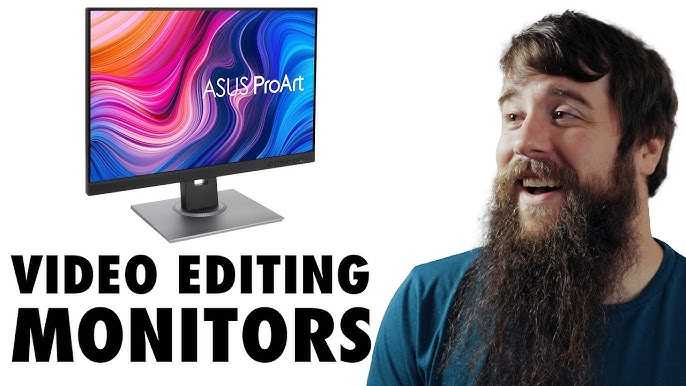To enable 144Hz on your monitor, simply access your display settings and select the 144Hz refresh rate option. Make sure your monitor supports 144Hz and that you’re using a compatible cable like DisplayPort or HDMI 2.0+. Updating your graphics drivers and adjusting the settings in your graphics card control panel can also help you switch smoothly to a higher refresh rate.
In just a few steps, you can enjoy ultra-smooth visuals by setting your monitor to 144Hz. First, verify your monitor’s specifications and connections. Then, tweak your display settings or graphics card options to activate the higher refresh rate, giving you a more responsive and immersive experience whether gaming, working, or streaming content.
If you’re eager to experience the lightning-fast motion and crisp visuals that 144Hz delivers, it’s easier than you think to enable this feature. No need to be a tech expert—just follow some simple steps to optimize your display settings. Starting with checking your monitor’s capabilities and ensuring you have the right cable, then adjusting your system’s settings, you’ll be all set to enjoy smooth and fluid screen performance that elevates your digital experience.
How to Enable 144Hz on Monitor: A Complete Guide
Understanding Why 144Hz Matters
Having a monitor set to **144Hz** offers a much smoother visual experience compared to standard 60Hz screens. This refresh rate reduces motion blur and makes fast-moving images appear clearer. Whether you’re gaming or working, enabling 144Hz can improve your overall display quality.
Check Your Monitor Compatibility
Before trying to enable 144Hz, ensure your monitor supports this refresh rate. Look at the monitor’s specifications label or user manual. Some budget monitors only support 60Hz or 75Hz, so verifying compatibility is essential to avoid frustration.
Identifying Your Monitor’s Refresh Rate Capabilities
- Check the product specifications online or on the box.
- Look for terms like “Refresh Rate” or “Hz” in the manual.
- Test different settings to confirm support.
Inspect Your Graphics Card Capabilities
Your graphics card must also support 144Hz output. Most modern GPUs can handle this, but older or integrated graphics may have limitations. Confirm your graphics card’s specifications to ensure compatibility.
Verifying Your GPU Support
- Check the manufacturer’s website for maximum supported refresh rates.
- Use system information tools to identify your GPU model.
- Update your graphics card driver regularly for optimal performance.
Connecting Your Monitor Properly
The connection type between your PC and monitor impacts whether 144Hz can be achieved. Use the appropriate cable and port to ensure capable communication.
Best Cables for 144Hz
- DisplayPort cables are generally preferred for 144Hz at high resolutions.
- High-quality HDMI cables can also support 144Hz, especially HDMI 2.0 or higher.
- Avoid using older DVI or VGA connections for high refresh rates.
Choosing the Right Ports
- Use DisplayPort 1.2 or above.
- Use HDMI 2.0 or newer versions.
- Confirm that the port on both the monitor and GPU supports high refresh rates.
Configuring Windows Settings for 144Hz
Adjusting display settings in Windows is crucial to enable 144Hz.
Steps to Change Refresh Rate in Windows
- Right-click on the desktop and select “Display Settings”.
- Scroll down and click on “Advanced display settings”.
- Select your monitor from the list.
- Click on “Display adapter properties”.
- Navigate to the “Monitor” tab.
- Choose “144Hz” from the “Screen refresh rate” dropdown menu.
- Click “Apply” and then “OK”.
Adjusting Graphics Card Settings
Sometimes, Windows alone might not enable 144Hz, requiring adjustments within your GPU control panel.
Using NVIDIA Control Panel
- Right-click on the desktop and select “NVIDIA Control Panel”.
- Under “Display”, click on “Change resolution”.
- Select your monitor from the list.
- Set the refresh rate to 144Hz.
- Click “Apply”.
Using AMD Radeon Settings
- Right-click on the desktop and choose “AMD Radeon Settings”.
- Go to the “Display” tab.
- Find your monitor and select it.
- Set the refresh rate to 144Hz.
- Click “Apply”.
Troubleshooting Common Problems
Sometimes enabling 144Hz doesn’t work immediately, or the display flickers. Here are solutions to common issues.
Display Not Showing 144Hz Option
- Ensure your connection cable supports 144Hz.
- Update your graphics driver to the latest version.
- Verify your monitor actually supports 144Hz.
- Restart your computer after changing settings.
Screen Flickering or Artifacts
- Lower or change the refresh rate slightly, then try again.
- Check for loose or damaged cables.
- Update graphics driver or reinstall it if necessary.
Tips for Optimal 144Hz Performance
To get the most out of your 144Hz monitor, follow these quick tips.
Maintain Proper Cable Quality
Use high-quality DisplayPort or HDMI cables rated for high bandwidth to ensure stable signals.
Keep Drivers Up-to-Date
Regularly check for updates for your graphics card driver to improve compatibility and performance.
Adjust Refresh Rate in Games
Most games have their own display settings. Set the refresh rate to 144Hz within the game for the best experience.
Monitor Settings Optimization
Access your monitor’s on-screen menu (OSD) to adjust brightness, contrast, and response time for better visuals.
Related Topics
Exploring related topics can further enhance your experience.
What is G-SYNC and FreeSync?
These technologies synchronize your monitor and GPU to reduce tearing and stuttering, especially at high refresh rates.
Overclocking Your Monitor
In some cases, you can push your monitor above its rated refresh rate, but this can risk hardware damage and is not recommended unless you are experienced.
Comparing 144Hz and 240Hz Monitors
While 144Hz improves smoothness, some gamers opt for 240Hz for even more fluid motion, but it requires a compatible GPU and specific hardware.
Enabling 144Hz on your monitor is straightforward once you confirm compatibility, use the right cables, and adjust your display settings properly. Follow these steps carefully, and you’ll enjoy a much smoother visual experience whether gaming, editing, or browsing. Remember, keeping your software updated and choosing quality accessories ensures your monitor performs at its best.
How to change monitor refresh rate!
Frequently Asked Questions
What settings should I check on my graphics card to enable a 144Hz refresh rate?
You need to access your graphics card control panel, such as NVIDIA Control Panel or AMD Radeon Settings. Once there, navigate to the display or resolution section, select the monitor you want to configure, and set the refresh rate to 144Hz. Make sure your graphics driver is up to date to support higher refresh rates efficiently.
How can I verify if my monitor is set to 144Hz after changing settings?
After adjusting the refresh rate, you can verify the setting through your operating system. On Windows, right-click on the desktop, select Display Settings, then go to Advanced Display Settings. The refresh rate should be listed there. On Mac, open System Preferences, select Displays, and check the refresh rate in the Display tab. If set correctly, it will show as 144Hz or higher.
What cable types are necessary to run a monitor at 144Hz?
To achieve a 144Hz refresh rate, you need to use high-quality cables such as DisplayPort 1.2 or higher, or HDMI 2.0 and above. These cables support the bandwidth required for higher refresh rates. Using older or lower-quality cables might limit your monitor’s capabilities, preventing it from displaying at 144Hz properly.
Are there specific monitor settings I should enable or adjust for 144Hz?
Yes, most monitors have an on-screen display (OSD) menu where you can select different refresh rate modes. Check your monitor’s settings menu for any options related to the refresh rate or gaming modes. Some monitors may require you to enable a specific setting, such as “High Refresh Rate Mode,” to operate at 144Hz.
Why does my monitor not display at 144Hz even after changing settings?
This issue may occur if your graphics driver isn’t configured correctly, the cable isn’t compatible, or the monitor’s firmware needs an update. Ensure all drivers are current, switch to a supported cable, and check for firmware updates on your monitor. Additionally, confirm that your graphics hardware can support 144Hz at the resolution you use.
Final Thoughts
To enable 144Hz on your monitor, first verify that your monitor and graphics card support this refresh rate. Access your display settings through your computer’s control panel or system preferences. Adjust the refresh rate to 144Hz in the advanced display options.
Ensure your graphics drivers are up to date for optimal performance. Restart your computer after making these changes to apply the new settings properly.
In conclusion, to enable 144Hz on monitor, follow these straightforward steps and confirm compatibility. Proper configuration ensures smoother visuals and improved gaming or viewing experience.

With experience in IT support and consumer technology, I focus on step-by-step tutorials and troubleshooting tips. I enjoy making complex tech problems easy to solve.





